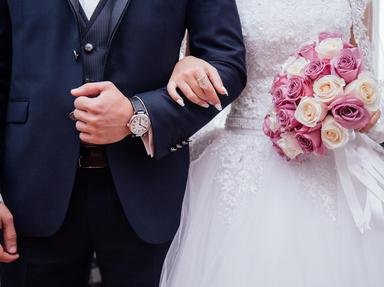Quiz Answer Key and Fun Facts
1. Heard frequently in North American and European weddings, who wrote the piece of music known variously as "Here Comes the Bride" or more correctly as the "Bridal Chorus" from "Lohengrin"?
2. In Western cultures, white wedding dresses are the norm, but in Eastern Asia, what color are you most likely to see a Chinese bride wearing?
3. In some parts of Turkey, why will all the unmarried women attending a wedding write their names on the bride's shoe?
4. In some parts of Germany, friends and family of the couple to be married will engage in which of the following practices in an attempt to ensure good luck, happiness, and fertility?
5. In which of these countries is it common for the bride to have very intricate, temporary tattoos applied to her hands and feet just before the wedding?
6. Many cultures have a custom of jumping over what household object as part of the wedding ceremony?
7. An Islamic wedding can be a lively matter with much dancing, and the breaking of a wine glass to the shouts of "Mazel Tov!"
8. Which of the following is a legitimate wedding tradition in parts of South America?
9. In some parts of England it is considered good luck to hire which unlikely person to come and kiss the bride at her wedding?
10. In some parts of Australia it is considered good luck for a bride to carry a horseshoe over their arm during the wedding.
Source: Author
dcpddc478
This quiz was reviewed by FunTrivia editor
trident before going online.
Any errors found in FunTrivia content are routinely corrected through our feedback system.


